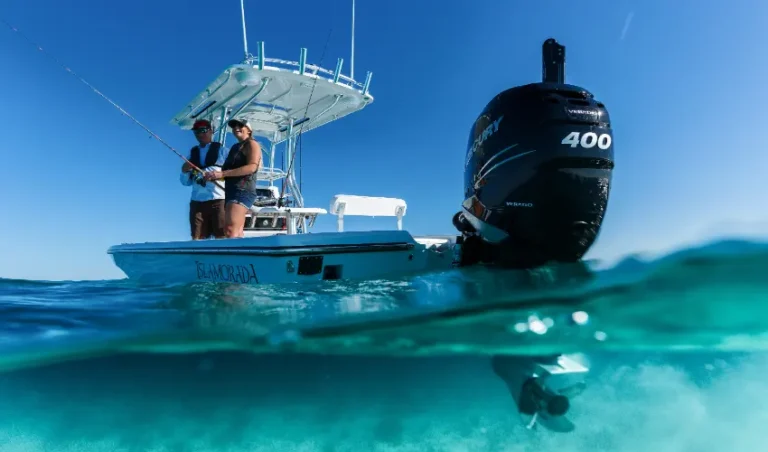If you own a boat powered by an outboard motor, you know how important fuel efficiency is—not only for saving money but also for extending your time on the water. Outboard motors can be fuel-hungry, especially if not maintained or operated properly. Fortunately, there are several practical ways to improve fuel efficiency, helping you get the most miles per gallon and reduce your environmental impact. In this article, we’ll explore the top tips to maximize your outboard motor’s fuel economy.
- Perform Regular Maintenance
One of the simplest ways to ensure your outboard motor runs efficiently is through regular maintenance. This includes:
- Changing the engine oil and oil filter regularly.
- Replacing spark plugs as recommended by the manufacturer.
- Cleaning or replacing fuel filters to prevent blockages.
- Inspecting the propeller for damage and ensuring it’s the right size and pitch.
A well-maintained engine burns fuel more efficiently, reduces wear, and prevents costly repairs down the line.
- Use the Right Fuel and Oil Mixture
For two-stroke engines, using the correct fuel-to-oil ratio is critical. Too much oil reduces efficiency and fouls the engine, while too little can cause engine damage. Follow the manufacturer’s specifications carefully. For four-stroke engines, use the recommended grade of fuel to ensure optimal combustion.
Also, consider using high-quality fuel additives that improve combustion and reduce carbon deposits.
- Optimize Propeller Selection
The propeller plays a major role in fuel efficiency. Using the correct size and pitch propeller for your boat and motor ensures the engine operates within its ideal RPM range. A propeller that’s too large or too small can cause the engine to work harder and burn more fuel.
If you notice your boat struggling to reach recommended RPM or if your engine frequently exceeds its max RPM, it’s time to evaluate your propeller choice.
- Reduce Excess Weight and Drag
Every extra pound on your boat increases fuel consumption. Remove unnecessary gear and equipment before heading out to reduce weight. Also, keep your boat’s hull clean from algae and barnacles, which increase drag and slow you down.
Consider using a hull wax or applying an anti-fouling coating to keep the bottom smooth. The less resistance your boat faces moving through the water, the less fuel you’ll burn.
- Use Efficient Throttling Techniques
How you operate your throttle impacts fuel consumption significantly:
- Avoid rapid acceleration and high-speed cruising for extended periods.
- Plan your route to minimize unnecessary maneuvers.
- Try to maintain a steady speed at the engine’s optimal RPM range.
- Use trim controls to adjust the boat’s angle on the water, which reduces drag and improves efficiency.
Learning to read your boat’s performance and adjusting accordingly can save a lot of fuel.
- Warm Up the Engine Properly
Before heading out, let your outboard motor warm up for a few minutes at idle. A cold engine runs less efficiently and uses more fuel. Warming it up helps the oil circulate and the engine reach an optimal temperature, improving combustion and performance.
However, avoid prolonged idling, as this wastes fuel without moving the boat.
- Monitor and Adjust for Weather and Water Conditions
Wind, waves, and current all affect fuel consumption. If possible, plan your trips to avoid fighting strong headwinds or currents. Operating in calm water allows your boat to glide more smoothly, using less power and fuel.
In rough conditions, reduce speed to prevent excessive fuel burn from battling waves.
- Use Fuel Management Tools
Modern technology offers tools like fuel flow meters and GPS-enabled apps to monitor your fuel consumption in real time. These devices help you adjust your driving habits and optimize fuel usage.
Tracking fuel consumption data over time also helps identify when maintenance or adjustments are needed.
- Avoid Prolonged Idling and Excessive Revving
Idling for long periods or revving the engine excessively without load burns unnecessary fuel. If you need to wait or stay stationary, turn off the engine if it’s safe to do so. When moving, keep the engine within its ideal RPM band to maximize efficiency.
- Consider Upgrading to a More Fuel-Efficient Motor
If your outboard motor is older or inefficient, investing in a newer, more fuel-efficient model may save money in the long run. Modern four-stroke and direct fuel injection engines offer improved fuel economy and lower emissions compared to older two-stroke engines.
Conclusion
Improving fuel efficiency in your outboard motor is all about good maintenance, smart operation, and reducing unnecessary resistance. By following these tips, you can save money on fuel, reduce your environmental footprint, and enjoy longer, more economical boating trips. Whether you’re a casual boater or a fishing enthusiast, optimizing your outboard motor’s fuel usage benefits both your wallet and the planet.

